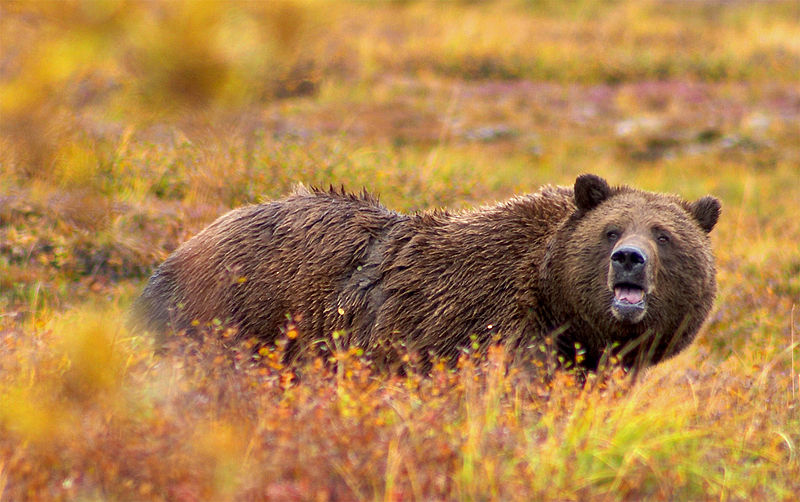First, a little natural history background information.
 |
| (1938 park poster, via Wikimedia) |
Unregulated hunting of ungulates in Yellowstone was largely
curtailed by 1886. However, increased
pressure from neighboring ranchers and citizens resulted in the Grey Wolf (Canis lupus) being extirpated from Yellowstone. The last official killing within the park occurred
in 1926.
 |
| (Gray Wolf, Fish and Wildlife Service) |
 |
| (Bull Elk By Mongo, via Wikimedia Commons.) |
1995. After decades
of absence, and 20 years of planning, wildlife biologists introduced 14 wolves
to Yellowstone National Park. Wolves
were observed to feed primarily on elk (Cervus elaphus). The Yellowstone Nation Park Gray Wolf
populations seemed stable following another addition of 17 wolves in 1996.
Now on to the “neat news”…
Ripple et al. just published an article in the Journal of
Animal Ecology examining the hypothesized tropic cascade resulting from the
absence, and then reintroduction of Gray Wolves in Yellowstone.
In a nutshell:
 |
| (Grizzly bear, via Wikimedia) |
Without wolves, park populations of elk were, on average, 12
elk square kilometer, and Elk populations declined following wolf reintroduction,
to approximately one elk per square kilometer.
Lower Elk population densities have resulted in increased woody plant
recruitment, particularly berry-producing shrubs. Ripple et al. (2013) demonstrate that this
shift in plant community composition (Ripple and Beschta, 2012) also resulted in a shift in Grizzly Bear
feeding behavior – an increase in berry consumption.
 |
| Figure 6 (Ripple and Beschta, 2004) illustrating creek plant community composition in 1996 (left), and the same location in 2002 (right), following wolf population establishment. (Image via Lycographos) |
Ripple, William J., Beschta, Robert L., Fortin, Jennifer K., Robbins, Charles T. 2013. Trophic cascades from wolves to grizzly bears in Yellowstone. Journal of Animal Ecology. DOI 10.1111/1365-2656.12123.
Background information sources: Gray Wolf Endangered Species Profile (FWS); Yellowstone National Park webpage and pages therein; Yellowstone Wolf Project (Nat'l Park Service. 1996. YCR-NR-97-4).

No comments:
Post a Comment
Please contact me at Shappell.Ecology -at- gmail.com if you have any questions, comments, or concerns regarding the content of this blog.